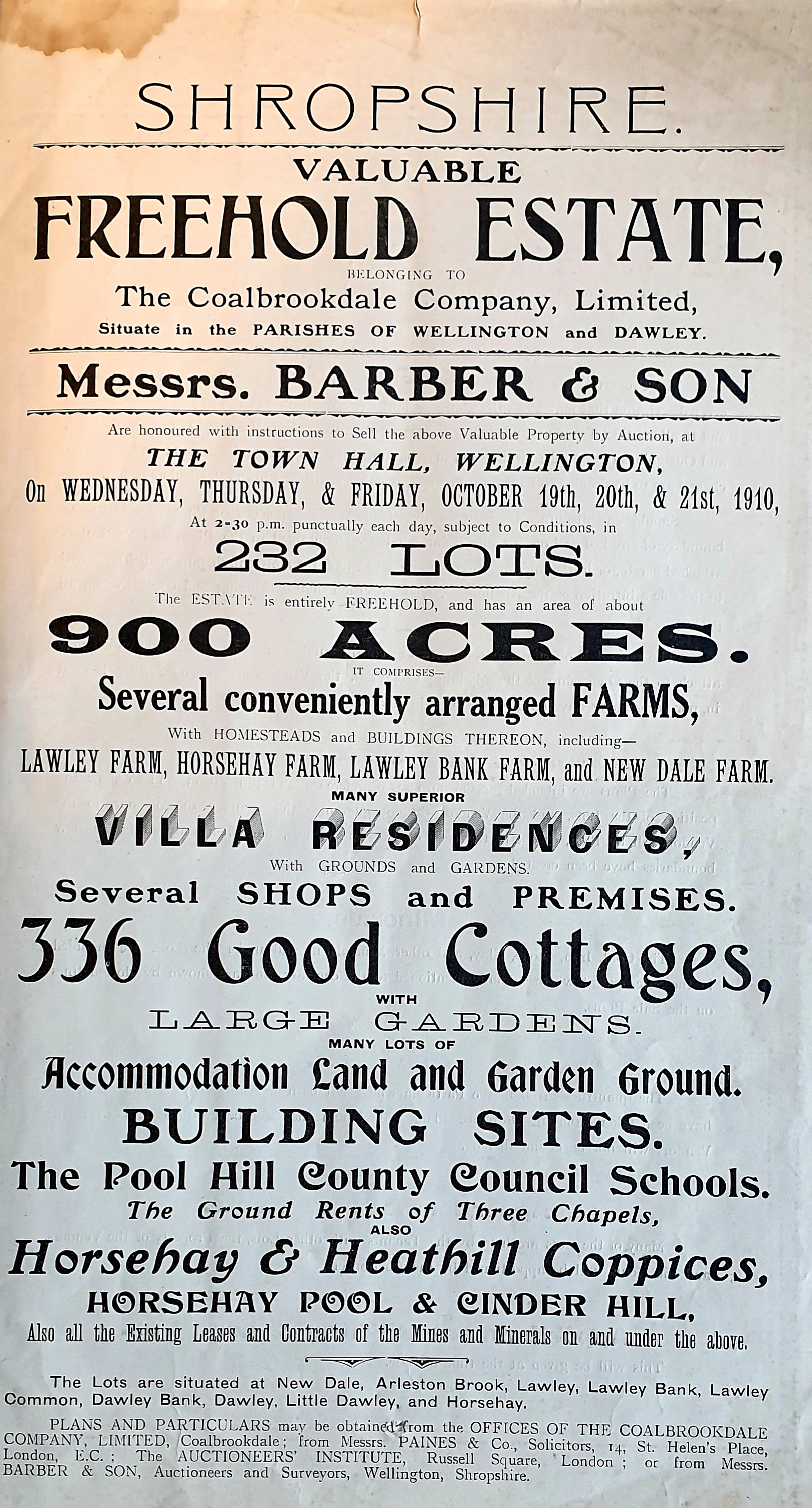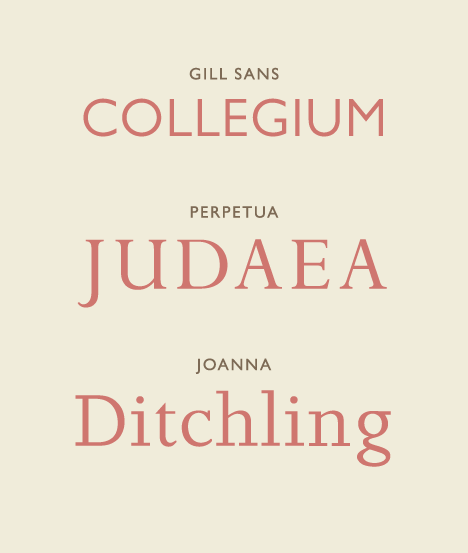|
Typeface
A typeface (or font family) is the design of lettering that can include variations in size, weight (e.g. bold), slope (e.g. italic), width (e.g. condensed), and so on. Each of these variations of the typeface is a font. There are thousands of different typefaces in existence, with new ones being developed constantly. The art and craft of designing typefaces is called '' type design''. Designers of typefaces are called '' type designers'' and are often employed by '' type foundries''. In desktop publishing, type designers are sometimes also called ''font developers'' or ''font designers''. Every typeface is a collection of glyphs, each of which represents an individual letter, number, punctuation mark, or other symbol. The same glyph may be used for characters from different scripts, e.g. Roman uppercase A looks the same as Cyrillic uppercase А and Greek uppercase alpha. There are typefaces tailored for special applications, such as cartography, astrology or mathematics ... [...More Info...] [...Related Items...] OR: [Wikipedia] [Google] [Baidu] |
List Of Typefaces
This is a list of typefaces, which are separated into groups by distinct artistic differences. The list includes typefaces that have articles or that are referenced. Superfamilies that fall under more than one category have an asterisk (*) after their name. Serif * Adobe Jenson * Albertus * Aldus *Alexandria * Algerian * Amelia (Designed in 1963 by Stan Davis) * American Typewriter * Antiqua * Arno* * Aster *Aurora ** News 706 *Baskerville *Bell (Didone classification serif type designed by Richard Austin, 1788) *Belwe Roman * Bembo *Bernhard Modern *Bodoni **Bauer Bodoni * Bitstream Charter * Bookman * Bulmer *Caledonia * Calisto MT *Cambria *Capitals * Cartier * Caslon ** Wyld * Caslon Antique / Fifteenth Century *Centaur * Century type family *Charis SIL * Cheltenham *Clearface *Cochin * Computer Modern * Concrete Roman * Constantia * Copperplate Gothic * DejaVu Serif * Didot * Droid Serif * Emerson * Fairfield *Fat face * FF Scala * Fixedsys * Footlight *Friz Quadrata *Garamo ... [...More Info...] [...Related Items...] OR: [Wikipedia] [Google] [Baidu] |
Typography
Typography is the art and technique of arranging type to make written language legible, readable and appealing when displayed. The arrangement of type involves selecting typefaces, point sizes, line lengths, line-spacing ( leading), and letter-spacing (tracking), as well as adjusting the space between pairs of letters ( kerning). The term ''typography'' is also applied to the style, arrangement, and appearance of the letters, numbers, and symbols created by the process. Type design is a closely related craft, sometimes considered part of typography; most typographers do not design typefaces, and some type designers do not consider themselves typographers. Typography also may be used as an ornamental and decorative device, unrelated to the communication of information. Typography is the work of typesetters (also known as compositors), typographers, graphic designers, art directors, manga artists, comic book artists, and, now, anyone who arranges words, letters, nu ... [...More Info...] [...Related Items...] OR: [Wikipedia] [Google] [Baidu] |
Helvetica
Helvetica (originally Neue Haas Grotesk) is a widely used sans-serif typeface developed in 1957 by Swiss typeface designer Max Miedinger and Eduard Hoffmann. Helvetica is a neo-grotesque design, one influenced by the famous 19th century (1890s) typeface Akzidenz-Grotesk and other German and Swiss designs. Its use became a hallmark of the International Typographic Style that emerged from the work of Swiss designers in the 1950s and '60s, becoming one of the most popular typefaces of the mid-20th century. Over the years, a wide range of variants have been released in different weights, widths, and sizes, as well as matching designs for a range of non-Latin alphabets. Notable features of Helvetica as originally designed include a high x-height, the termination of strokes on horizontal or vertical lines and an unusually tight spacing between letters, which combine to give it a dense, solid appearance. Developed by the ''Haas'sche Schriftgiesserei'' ( Haas Type Foundry) of M� ... [...More Info...] [...Related Items...] OR: [Wikipedia] [Google] [Baidu] |
Futura (typeface)
Futura is a geometric sans-serif typeface designed by Paul Renner and released in 1927. It was designed as a contribution on the New Frankfurt-project. It is based on geometric shapes, especially the circle, similar in spirit to the Bauhaus design style of the period. It was developed as a typeface by the Bauer Type Foundry (Bauersche Gießerei), in competition with Ludwig & Mayer's seminal Erbar typeface of 1926. Futura has an appearance of efficiency and forwardness. Although Renner was not associated with the Bauhaus, he shared many of its idioms and believed that a modern typeface should express modern models, rather than be a revival of a previous design. Renner's design rejected the approach of most previous sans-serif designs (now often called grotesques), which were based on the models of signpainting, condensed lettering and nineteenth-century serif typefaces, in favour of simple geometric forms: near-perfect circles, triangles and squares. It is based on strokes of ... [...More Info...] [...Related Items...] OR: [Wikipedia] [Google] [Baidu] |
Times New Roman
Times New Roman is a serif typeface. It was commissioned by the British newspaper ''The Times'' in 1931 and conceived by Stanley Morison, the artistic adviser to the British branch of the printing equipment company Monotype Imaging, Monotype, in collaboration with Victor Lardent, a lettering artist in ''The Times's'' advertising department. It has become one of the most popular typefaces of all time and is installed on most desktop computers. Asked to advise on a redesign, Morison recommended that ''The Times'' change their text typeface from a spindly nineteenth-century face to a more robust, solid design, returning to traditions of printing from the eighteenth century and before. This matched a common trend in printing tastes of the period. Morison proposed an older Monotype typeface named Plantin (typeface), Plantin as a basis for the design, and Times New Roman mostly matches Plantin's dimensions. The main change was that the contrast between strokes was enhanced to give a cr ... [...More Info...] [...Related Items...] OR: [Wikipedia] [Google] [Baidu] |
Font
In movable type, metal typesetting, a font is a particular #Characteristics, size, weight and style of a typeface. Each font is a matched set of type, with a piece (a "Sort (typesetting), sort") for each glyph. A typeface consists of a range of such fonts that shared an overall design. In modern usage, with the advent of computer fonts, the term "font" has come to be used as a synonym for "typeface", although a typical typeface (or "font family") consists of a number of fonts. For instance, the typeface "Bauer Bodoni" (sample shown here) includes fonts "Roman (typeface), Roman" (or "Regular"), "Emphasis (typography), Bold" and ''"Italic type, Italic"''; each of these exists in a variety of sizes. The term "font" is correctly applied to any one of these alone but may be seen used loosely to refer to the whole typeface. When used in computers, each style is in a separate digital "font file". In both traditional typesetting and modern usage, the word "font" refers to the delivery ... [...More Info...] [...Related Items...] OR: [Wikipedia] [Google] [Baidu] |
Font Width
In metal typesetting, a font is a particular size, weight and style of a typeface. Each font is a matched set of type, with a piece (a " sort") for each glyph. A typeface consists of a range of such fonts that shared an overall design. In modern usage, with the advent of computer fonts, the term "font" has come to be used as a synonym for "typeface", although a typical typeface (or "font family") consists of a number of fonts. For instance, the typeface " Bauer Bodoni" (sample shown here) includes fonts " Roman" (or "Regular"), "Bold" and ''" Italic"''; each of these exists in a variety of sizes. The term "font" is correctly applied to any one of these alone but may be seen used loosely to refer to the whole typeface. When used in computers, each style is in a separate digital "font file". In both traditional typesetting and modern usage, the word "font" refers to the delivery mechanism of the typeface. In traditional typesetting, the font would be made from metal or wood type ... [...More Info...] [...Related Items...] OR: [Wikipedia] [Google] [Baidu] |
Italic Type
In typography, italic type is a cursive font based on a stylised form of calligraphic handwriting. Owing to the influence from calligraphy, italics normally slant slightly to the right. Italics are a way to emphasise key points in a printed text, to identify many types of creative works, to cite foreign words or phrases, or, when quoting a speaker, a way to show which words they stressed. One manual of English usage described italics as "the print equivalent of Underline, underlining"; in other words, underscore in a manuscript directs a typesetter to use italic. The name comes from the fact that calligraphy-inspired typefaces were first designed in Italy, to replace documents traditionally written in a handwriting style called chancery hand. Aldus Manutius and Ludovico Arrighi (both between the 15th and 16th centuries) were the main type designers involved in this process at the time. Along with blackletter and Roman type, it served as one of the major typefaces in the history ... [...More Info...] [...Related Items...] OR: [Wikipedia] [Google] [Baidu] |
Type Design
Type design is the art and process of designing typefaces. This involves drawing each letterform using a consistent style. The basic concepts and design variables are described below. A typeface differs from other modes of graphic production such as handwriting and drawing in that it is a fixed set of alphanumeric characters with specific characteristics to be used repetitively. Historically, these were physical elements, called sorts, placed in a wooden frame; modern typefaces are stored and used electronically. It is the art of a type designer to develop a pleasing and functional typeface. In contrast, it is the task of the typographer (or typesetter) to lay out a page using a typeface that is appropriate to the work to be printed or displayed. History The technology of printing text using movable type was invented in China, but the vast number of Chinese characters, and the esteem with which calligraphy was held, meant that few distinctive, complete typefaces were creat ... [...More Info...] [...Related Items...] OR: [Wikipedia] [Google] [Baidu] |






